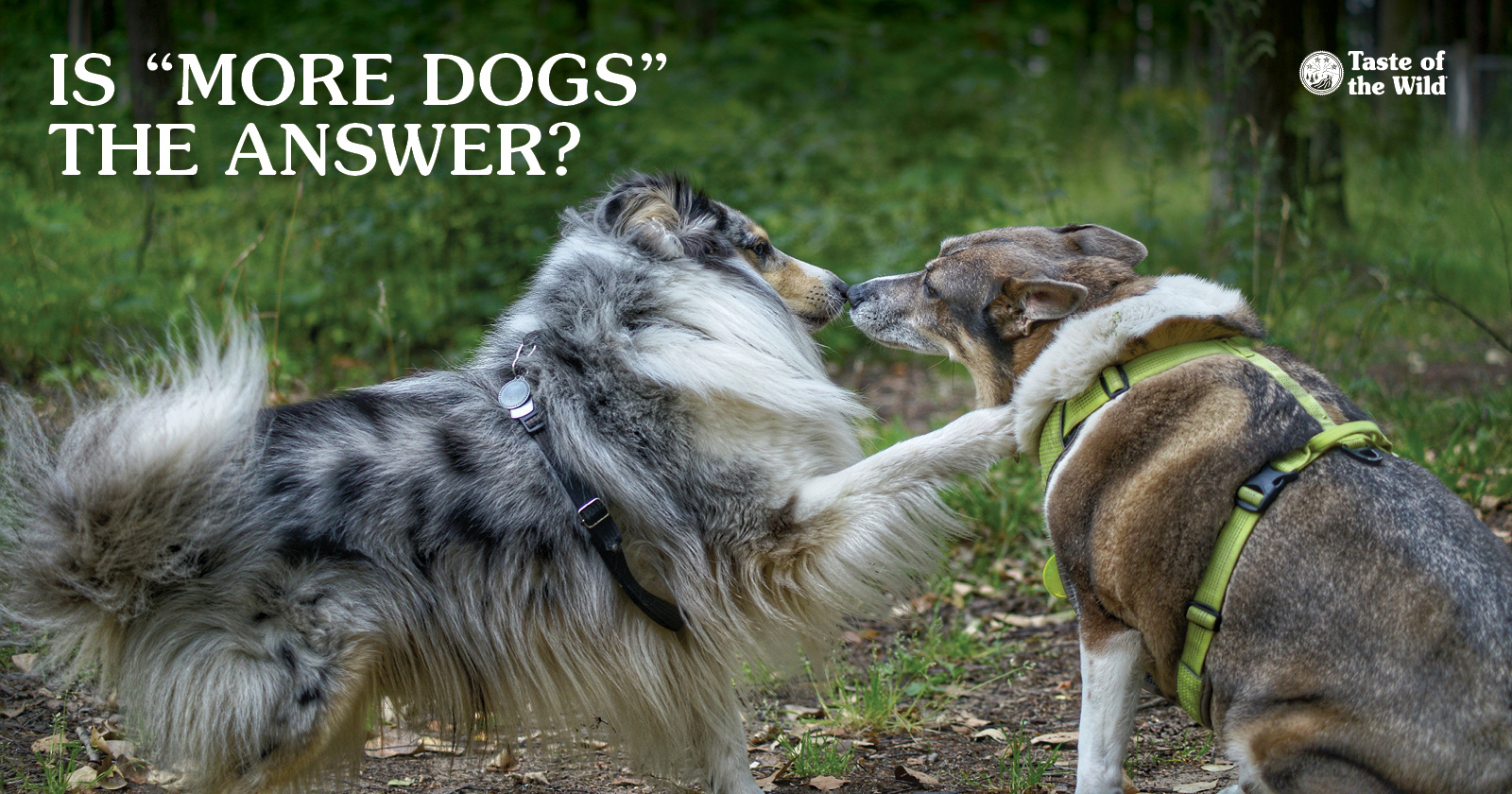
Do you ever worry that your dog might be lonely for some canine companionship? Maybe you can’t spend as much time at home as you did before. Or perhaps you’ve recently lost an older dog. How do you know if your current dog would really love or really hate another pooch in the house?
First, dogs are social creatures and generally like the company of others. But finding the right match for your dog is a little like setting up a friend on a blind date. For some dogs, it’s love at first sight, others take a while to click, and some dogs just feel “meh” about the other dog. There’s no guarantee they will be best friends. If you’re looking to add more dogs to your current head count, here are some considerations to help you make the right choice.
Evaluate your current dog
What’s your current dog’s temperament? Does it play well with other pups, or does it tend to be either submissive or aggressive in social situations? An aggressive dog may not take well to sharing its space, food, toys, or humans with another dog and may prefer to be alone. Likewise, a dog that was submissive to your previous pet may come out of their shell when allowed to be the only dog.
Does your current dog have any medical or behavioral issues? You might think a canine companion would be the answer for a dog with separation anxiety, but this isn’t always the case. And if your current dog is a digger or barker, consider getting those problems under control before the new dog learns the same behaviors.
Choose the right second dog
While it might help to take your dog to a shelter to meet other dogs, this can be a stressful and unfamiliar environment. Even if the dogs appear to get along there, that doesn’t mean the same will be true when you get home. It’s better to work at finding a dog that’s a good match for your current pooch and make introductions later.
Some breeds, such as golden retrievers and labradors, tend to be more dog-friendly than other breeds and may blend into the house more easily.
When it comes to activity levels, opposites don’t always attract. If your current dog is a bulldog that prefers couch surfing, introducing a high-energy border collie may not be the best match. Although there can be dog-to-dog variations, selecting a dog that’s the same breed as your current dog may help ensure similar energy levels, if not immediately, then eventually.
Don’t assume a young dog will always revitalize an older dog. It’s possible if your gray-muzzled pup is in good health, but if he or she suffers from arthritis or other medical problems, adding a rambunctious puppy may be frustrating for your senior dog.
The sex of the new dog also matters. Fights are more likely to break out between two female dogs. Better to have male and female (neutered and spayed, of course) or two neutered male dogs.
Make smooth introductions
Before any doggy introductions, make sure to take the new dog to your veterinarian for a thorough physical exam. Your vet will make sure the new pup is fully vaccinated and free of diseases and parasites.
Introductions are best done in a neutral space, such as in a public park. With both dogs on leashes, allow them to sniff and explore each other. Praise them for calm interactions and provide treats. Watch their body language and intervene if there’s any sign of aggression. If possible, take them on a walk together, liberally doling out praise and goodies.
Before you bring the new dog home, make sure that each dog has its own bed as well as food and water bowls. Remove any toys, especially your current dog’s favorites, so there won’t be any competition for resources. Allow your current dog to enter the house first. You may want to leave the leashes on them initially or put the new pup in a crate so the current dog can feel free to sniff and become more familiar.
All interactions between the two dogs should be supervised. If you need to leave the house, put them in separate rooms or crates to make sure nothing happens while you’re gone.
Start by always giving the current dog their food or treats first. You may need to feed them in separate rooms initially. Once mealtime is over, remove any remaining kibble to eliminate food rivalry. Eventually, the dogs will work out a hierarchy of their own. If your dogs still have trouble getting along, consult a trainer or veterinary behaviorist.
RELATED POST: How Adopting a Shelter Dog Can Improve Your Well-Being
The information in this blog has been developed with our veterinarian and is designed to help educate pet parents. If you have questions or concerns about your pet's health or nutrition, please talk with your veterinarian.
